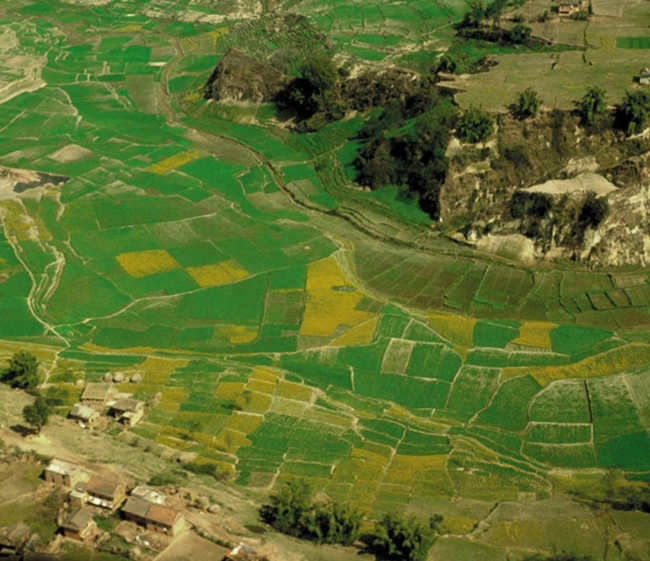
Rice and wheat are traditionally planted in rotation in eastern Afghanistan, as they are on much of the Indo-Gangetic Plain, which extends east of Afghanistan through Pakistan, India, Nepal and Bangladesh.
Restoring a productive rice-wheat system in Afghanistan is essential to reviving Afghan agriculture, ensuring food security, and setting the war-torn country on the road to economic recovery.
“We must focus our attention on reestablishing food security as quickly as possible,” said a senior aid official. “Restoring Afghanistan’s agricultural sector has multiple benefits. Historically, 80% of the population depends on farming and grazing. Revitalizing this sector not only will reduce dependency on international food assistance, but give employment to former combatants, help stabilize the security environment, and spur the economy.”
The World Bank estimates that cereal production, the mainstay of Afghanistan’s food security, has fallen by almost 40% since 1999 and is only half of what it was during the prewar years. In addition to wheat, rice is a major staple for the Afghan people, who consume on average 17 kg per capita per year (equal to 30 kg of unmilled rice). Historically, Afghanistan is largely self-sufficient in rice. However, in the past decade, when the country’s total rice requirement rose by 42%, the area planted to the grain fell by 35%, yields fell 6% to 1.8 tons per hectare (less than half of the world average), and total rice production plunged by 43%. As a result, rice imports have risen 20-fold, from 5,000 to more than 100,000 tons per year, at an annual cost of more than US$15 million.
Imported rice accounts for some 30% of Afghan consumption of the grain, a figure roughly parallel to the one-third of the Afghan people who depend on international food aid.
The rice-wheat system is the focus of an ongoing ten-year scientific effort to ensure the continued productivity of the 13.5 million hectares of the Indo-Gangetic Plain where the system is practiced, as well as a further 10.5 million hectares in China.
“It’s crucial that the rice-wheat farmers of South Asia continue to be able to harvest their crops and so feed the hundreds of millions of people who depend on them,” warned IRRI Director General Ronald P. Cantrell. “And, today, it’s a pressing need that the rice-wheat farmers of Afghanistan receive assistance in restoring the productivity of their farms.”
In a global effort to assist rice-wheat farmers in South Asia, the national agricultural research and extension systems of Pakistan, India, Nepal and Bangladesh have joined forces with scientists from IRRI and other Future Harvest centers — including the International Maize and Wheat Improvement Center (CIMMYT) in Mexico, the International Crops Research Institute for the Semi-Arid Tropics in India, the International Water Management Institute in Sri Lanka, and the International Potato Center in Peru — to form the Rice-Wheat Consortium for the Indo-Gangetic Plain. The consortium is funded by the Asian Development Bank, the government of The Netherlands, the Department for International Development (United Kingdom), the International Fund for Agricultural Development (Italy), the United States Agency for International Development, the government of Japan, and the Australian Centre for International Agricultural Research.





